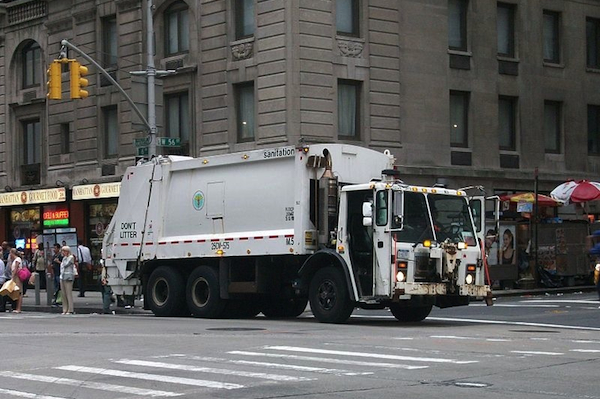
The City Council is considering a law to limit the impact of the city’s sanitation system on the communities who host most of New York’s garbage infrastructure. For those of you who think you’ve seen this movie before, you’re half right: The proposal would double-down on a nine-year-old plan that was supposed to solve the underlying problem.
The brawl over that earlier initiative—the 2005 Solid Waste Management Plan, lovingly nicknamed “the swamp”—was one of the real legislative tussles of the Bloomberg years.
The SWMP’s central focus was reducing the footprint of waste removal on the city overall—by moving to a system that transported trash out of the city by rail or barge rather than truck—and on particular neighborhoods, mostly low-income communities of color, that hosted the transfer stations that moved refuse from garbage trucks to long-distance haulers.
Getting some relief to those neighborhoods had been a goal for years for environmental justice advocates. It was a goal Mayor Bloomberg adopted: Under the SWMP, the city would reactivate or build marine transfer stations to eliminate the need for the truck stations. A bedrock principle of the plan was that each borough would handle its own municipal waste.
What touched off the Council battle was Bloomberg’s choice for the site of the Manhattan marine transfer station: East 91st Street in Yorkville, smack-dab in the district of Council Speaker Gifford Miller, who was a candidate for mayor trying to unseat Bloomberg. Miller managed to get the Council to defeat the SWMP, but did not rally the votes needed to override a mayoral veto. The SWMP went forward.
Since then, there has been modest but uneven progress at reducing the load on those transfer stations, according to data from the state Department of Environmental Conversation. Of the 15 waste transfer stations for which the state has both 2009 and 2013 statistics, nine saw decreases and six saw the amount of waste increase.
The city’s Department of Sanitation says the average daily tonnage handled by transfer stations in the city fell about 8 percent from 2005 to 2013, from nearly 22,000 tons per day to just over 20,000.
“So there’s been incremental improvement,” says Gavin Kearney, director of the environmental justice department at New York Lawyers for the Public Interest, which was involved in advocating for the SWMP. “The big gains will come as the marine transfer stations come on line.”
According to DSNY, one marine transfer for station (or MTS) is supposed to open in Queens next year. The Hamilton Avenue, Brooklyn, and 91st Street, Manhattan stations are expected to come on line in 2016. The following year, according to DSNY, the Southwest MTS in Brooklyn will be operational.
According to Kearney, the SWMP directed the city to first seek voluntary reductions in tonnage from the private companies that operate most of the transfer stations. But that has not been very successful, he says.
Hence the push to tie reductions in transfer-station tonnage to the new capacity that becomes available as the MTS fire up. Earlier this month saw the introduction of a Council bill, the Waste Equity Bill, that would reduce the tonnage handled by the South Bronx, North Brooklyn and Southeast Queens by 18 percent as the MTS come online, and require in future that no community district’s share of the city’s refuse be increased to more than 5 percent.
DSNY says it doesn’t comment on pending legislation.
What would also take pressure off the transfer stations–and off the largely low-income communities that live near the out-of-state landfills where New York’s garbage goes (whether by truck, rail or barge) is an increased recycling rate. But according to the MMR, the city’s diversion rate stood as a paltry 15.4 percent in fiscal year 2014.
Transfer station tonnage








